Online games have become an integral part of millions of players worldwide. Today there are a huge number of different online disciplines. You can play tank battles, fight in a tactical shooter or compete in races. Due to the competitive aspect, online games can offer a new experience. But despite this, the outcome of games like CS:GO often depends on the specification of your computer.
Today, there are many stability issues during an online match. So, some of the most popular problems are:
-
FPS drop;
-
High or low ping;
-
Lags.
Fortunately, all these problems can be fixed. To do this, using working tools to track your systems is enough. One such tool is Net graph. With it, you can get your computer working and eliminate problems.
Our platform will tell you about this and the useful functions of the Net graph in our article. Read the text to the end so your matches in CS:GO always end with your victory. And read our other blog posts to know more about CS:GO weapons, skins, community, and trends.
Enabling Netgraph In CS:GO
Net graph is a powerful tool for any Counter-Strike: Global Offensive player. It helps to track the game's network performance. It displays a graph of different network statistics. It can help identify and solve network-related problems. And you can get rid of high latency or packet loss.
This block will provide a step-by-step guide on enabling Netgraph in CS:GO. And we will explain the different console Netgraph commands and their functions.
To enable CS:GO Netgraph, do the following:
-
Open CS:GO and go to the game's main menu;
-
Click on the "Options" button at the bottom of the screen;
-
Click on the "Video Settings" tab;
-
Scroll down until you see the "Advanced Video Settings" section;
-
Look for the "Enable Developer Console (~)" option and make sure it is set to "Yes";
-
Click on the "Apply" button to save your changes;
-
Press the "~" key on your keyboard to open the console;
-
Type "net_graph 1" (without the quotes) in the console and press "Enter";
-
CS:GO Netgraph should now be on, and you should see a graph of different network statistics on your screen.
There are several console Netgraph commands. You can use them to customize Netgraph's appearance and functionality. Here are some of the most useful commands:
-
"net_graph 1" - Enables Net graph;
-
"net_graphproportionalfont 0" - Disables proportional font in Netgraph. It can make the graph easier to read;
-
"net_graphheight X" - Sets the height of the Netgraph graph to X pixels;
-
"net_graphpos X Y" - Sets the position of the Netgraph graph on your screen. Replace X and Y with the desired coordinates;
-
"net_graphsolid 1" - Enables a solid background behind the Netgraph graph. It can make it easier to read;
-
"net_graphshowinterp 1" - Shows the interpolation delay (in milliseconds) between the computer and server;
-
"net_graphshowlatency 1" - There Net graph shows your current latency (in milliseconds) to the game server;
-
"net_graphshowtickrate 1" - Shows the game server's tick rate (in Hz);
-
"net_graphmsecs 400" - Sets the update interval (in milliseconds) for the Netgraph graph. A lower value will make the graph more responsive but may impact game performance.
Understanding The Netgraph HUD
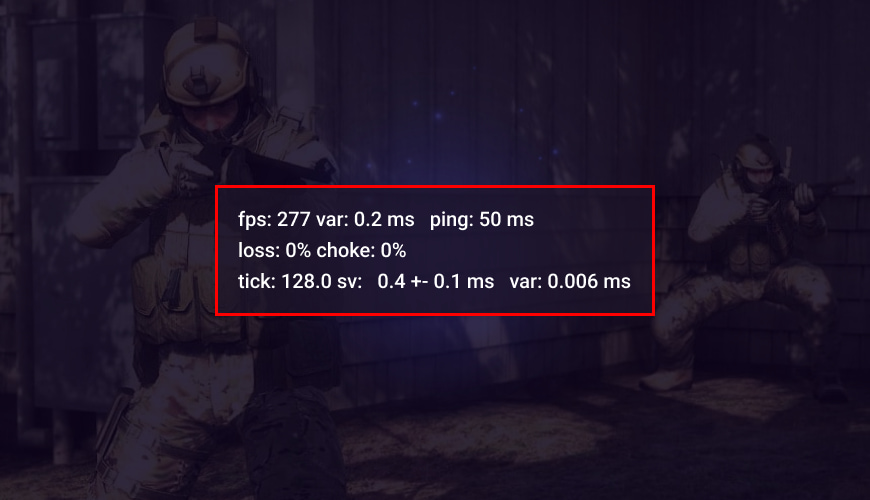
The Net graph HUD provides a wealth of information about the game's performance. It displays a graph of different network statistics. They are FPS, ping, and other important information. It all can help identify and solve network-related problems. This block will provide an overview of the elements that make up the Netgraph HUD. And we will explain the importance of FPS, ping, and other displayed information.
The CS:GO Netgraph HUD consists of several elements. They display different network statistics. Here are the main elements and their functions:
-
FPS. This element displays the current frame rate of the game. FPS measures how smoothly the game runs. The higher FPS, the smoother gameplay you get. If your gameplay looks like you are switching the series of photos, you have a low FPS. But if your gameplay looks like you are watching a smooth video, you’ve got optimal FPS;
-
Ping. This element displays your current latency to the game server. It's measured in milliseconds. And it is time it takes for your computer to communicate with the game server. A higher ping can result in lag and other performance issues;
-
Graph. This element displays a graph of different network statistics. They are FPS, ping, and other important information;
-
Packet loss. This element displays the percentage of packets lost between your computer and server. Packet loss often results in lagging and other performance errors;
-
Choke. This element displays the percentage of choke between your computer and server. A choke occurs when your computer is receiving data from the game server at a slower rate.
Importance Of FPS, Ping, And Other Displayed Information
FPS is an essential metric for any gamer. CS:GO Netgraph FPS indicates how well the computer runs the game. A higher FPS means smoother gameplay. At the same time, a lower FPS can result in stuttering and other performance issues. If your FPS is consistently low, you may need to adjust your graphics settings. Or you can upgrade your computer's hardware.
Ping is another crucial metric for online gaming. It measures the time it takes for your computer to communicate with the game server. A higher ping can result in lag, delay, and other performance issues. It can make it difficult to play the game effectively. If you notice that your ping is high, you may need to troubleshoot your network connection. Or you can also switch to a server with a lower ping.
Packet loss and choke are also important metrics to track. They can show network-related issues that can impact your gameplay. Packet loss occurs when data packets between your computer and the game server are lost. In contrast, a choke occurs when your computer receives slower data from the game server. Both can result in lag, delay, and other performance issues. And it can make it difficult to play the game effectively.
The Net graph HUD can provide valuable performance information. By understanding the different elements that make up the CS:GO Netgraph HUD, and the importance of metrics such as FPS, ping, and packet loss, you can identify and solve network-related problems that may impact your gameplay. Whether you are a casual or competitive gamer, the Netgraph HUD is a tool that can help you improve your game.
Analyzing FPS Data
Analyzing FPS data can provide valuable insights into the performance of your computer. The CS:GO Netgraph HUD displays FPS data in real-time. It allows you to track how well your computer is handling the game. In this block, we will explain how to interpret FPS data displayed in the Netgraph. And we will provide tips on how to optimize FPS and improve gameplay.
The FPS element in the Net graph HUD displays the current frame rate of the game. FPS measures how smoothly the game runs. And a higher FPS generally means smoother gameplay. But FPS can fluctuate based on several factors. They are:
-
The graphics settings;
-
Resolution;
-
Many players in the game.
To analyze FPS data, you should look for consistent patterns over time. Suppose your FPS drops consistently in certain situations, such as during intense combat or in crowded areas.
In that case, you may need to adjust your graphics settings to improve performance. Also, if your FPS drops below 60, you may need to consider upgrading your computer's hardware. Or reduce the demand on your computer by lowering the game's graphics settings.
Tips For Optimizing FPS And Improving Gameplay
Here are some tips for optimizing FPS and improving gameplay with CS:GO Netgraph:
-
Lower graphics settings. One of the easiest ways to improve FPS is by lowering your graphics settings. Lowering the resolution, reducing the level of detail, or turning off effects can help. It reduces the demand on your computer's resources and improves FPS;
-
Update drivers. Keeping your computer's drivers up-to-date can help improve FPS and prevent crashes. Regularly check for driver updates, especially for your graphics card;
-
Disable unnecessary programs. Closing unnecessary programs running in the background can free up resources. Make sure to close any programs that you don't need while playing the game;
-
Overclock your hardware. Overclocking your CPU or graphics card can help improve FPS. But it can also increase the risk of overheating and other hardware problems. Make sure to research overclocking. Do it before attempting it, and track your computer's temperature while playing;
-
Use a dedicated graphics card. This card can significantly improve FPS and game performance;
-
Use high-performance mode. Switching your computer to high-performance mode can help. It improves FPS by prioritizing performance over energy efficiency.
Analyzing FPS data can help identify and solve performance issues in your game. Remember to track your FPS regularly. And make adjustments as needed to ensure the best possible performance.
TIP! Optimizing your computer workflow should always start with simple things. First, make sure your internet connection is stable. And only then start changing the graphics settings and reduce the load on the PC. And you can replace PC components with more modern ones in case of problems, even with low graphics.
Troubleshooting Netgraph Issues
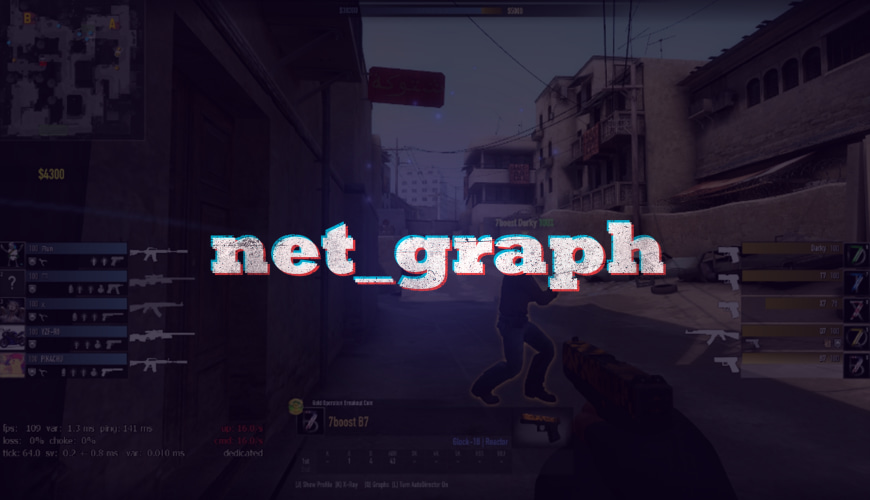
Like any tool, Net graph can encounter issues that may affect its functionality. In this block, we will explore some common issues with Netgraph.
Common issues with Netgraph and how to fix them:
-
CS:GO Netgraph is not displaying. If you have trouble getting Netgraph to display, ensure it's enabled in the game settings. Open the console and type "net_graph 1" to enable Netgraph. If it still doesn't display, try typing "net_graphproportionalfont 0". This is how you can change the net graph font size;
-
Netgraph is blocking your view. If Netgraph is blocking your view of the game, you can adjust its position on the screen. For this, type "net_graphpos X Y" in the console. X and Y are the coordinates on the screen where you want to place Netgraph;
-
FPS drops. Check your graphics settings if you're experiencing FPS drops while using Netgraph. Lowering the graphics settings can help reduce the demand on your computer's resources. Also, ensure you have the latest drivers installed for your graphics card. And also close any unnecessary programs running in the background;
-
Ping issues. Your internet connection may be an issue if you're experiencing high ping or packet loss. Try resetting your router or modem. Or contact your internet service provider for help.
Advanced Netgraph Features
Besides displaying important information like FPS and ping, Netgraph also has advanced features. They can help players analyze game performance over time. In this block, we will explore some of these advanced Netgraph features. And we will provide tips on how to use them to improve your gameplay.
|
Graphing |
One of the advanced features of CS:GO Netgraph is the ability to graph performance metrics. By typing "net_graphproportionalfont 0" in the console, you can enable graphing in Netgraph. This will display a graph of your FPS or other metrics over time. It lets you see how your game performance has changed during a game session. Graphing can be useful for identifying trends in in-game performance. It shows FPS drops during certain map parts or under certain conditions. By identifying these trends, you can make adjustments to your graphics settings. This will optimize performance and ensure a smoother gaming experience. |
|
Benchmarking |
Another advanced feature of CS:GO Netgraph is benchmarking. By typing "net_graphproportionalfont 1" in the console, you can enable benchmarking in Netgraph. This will display a bar graph of your FPS or other metrics and a benchmark line. It represents your average FPS or metric over a certain period. Benchmarking can be useful for comparing game performance across different game sessions. Or you can identify performance issues that may be affecting your gameplay. By comparing your FPS or other metrics to the benchmark line, you can quickly identify areas where you may need to make adjustments to improve performance. |
|
Max FPS |
Netgraph also has a "fps_max" Netgraph command that allows you to set a max FPS for the game. This can be useful for preventing your computer from overheating. By setting a max FPS, you can ensure a smoother gaming experience. And you will reduce the risk of performance issues. |
Using Netgraph To Analyze Game Performance Over Time
For this, start by enabling the advanced features of Netgraph. Next, play the game for some time. You can do it for an hour or a few games while monitoring your FPS and other metrics using Netgraph.
After the game session, review the graph or benchmark data. It's to identify any trends in in-game performance. For example, you may notice that your FPS drops during certain conditions in the game. For example, you may face drops when many players are on the screen. Use this information to make adjustments to your graphics settings or gameplay.
You can also use the CS Net graph to compare game performance across different game sessions. For example, you may want to compare your FPS and other metrics during a game session on one map to a game session on another map. Use the benchmarking feature to compare your performance across the different game sessions. And identify any areas where you need to make adjustments to improve performance.
Tracking your FPS and other real-time metrics during gameplay is also important. Use Netgraph to track your FPS and other metrics during gameplay. It's to identify any immediate issues that may be affecting your performance. For example, you may notice your FPS drops during a certain part of the map. It can say that there may be too much demand for your computer's resources.
Conclusion
In conclusion, the CS Net graph is a vital tool for any CS: GO player. It provides real-time feedback on FPS, ping, and other important metrics. It allows players to adjust their settings and gameplay to improve their performance.
With its advanced features, such as graphing and benchmarking, Netgraph allows players to:
-
Analyze their game performance over time;
-
Identify trends;
-
Make adjustments to optimize performance.
By using Netgraph, players can:
-
Troubleshoot issues;
-
Improve their gameplay;
-
Ensure a smoother, more enjoyable gaming experience.
Netgraph is a must-have tool for any serious CS: GO player. By tracking performance and optimizing gameplay along with luxurious skins, players can gain a competitive edge in Counter-Strike. And they can improve the chances of success. Practice and dedication, along with the use of powerful tools like Netgraph, are essential to achieving success in CS: GO.
FAQ
What Is Netgraph In CS:GO?
Netgraph is a feature that displays real-time information about the game's network performance. It can be useful for players who want to track their game's performance and optimize gameplay.
How Do I Enable Netgraph In CS:GO?
To enable Netgraph in CS:GO, you can follow these steps:
-
Launch CS:GO and go to the game's settings menu;
-
Click on the "Game" tab and then select "HUD Options";
-
Scroll down until you see the option for "Netgraph" and enable it;
-
You can also customize the position and size of the Netgraph display on your screen.
How Can Netgraph Help Me Improve My Gameplay?
Netgraph can help you improve your gameplay. It can do it by providing real-time feedback on your network performance. It includes your ping, packet loss, and server tick rate. This information can help you make adjustments to your playstyle.
What Do The Different Elements Of The Netgraph HUD Mean?
The different elements of the Netgraph HUD include:
-
Ping: measures the time data travels from your computer to the game server and back;
-
Packet loss: measures the percentage of dropped data packets during transmission;
-
Server tick rate: measures the frequency at which the server updates the game state;
-
FPS (frames per second): measures the number of frames rendered on your screen per second.
How Can I Troubleshoot FPS Drops And Other Performance Issues Using Netgraph?
You can use Netgraph to troubleshoot the problem. For example, when you notice that your FPS is consistently low. You may need to adjust your graphics settings or upgrade your hardware. Switch to a different server if you notice high ping or packet loss.
How Can I Use Advanced Netgraph Features To Analyze Game Performance Over Time?
Advanced Netgraph features can analyze game performance over time. For example, you can use the Netgraph graph feature to display a graph of FPS or other metrics. You can also use the Netgraph record feature. This is to record and analyse your game session later using external tools.
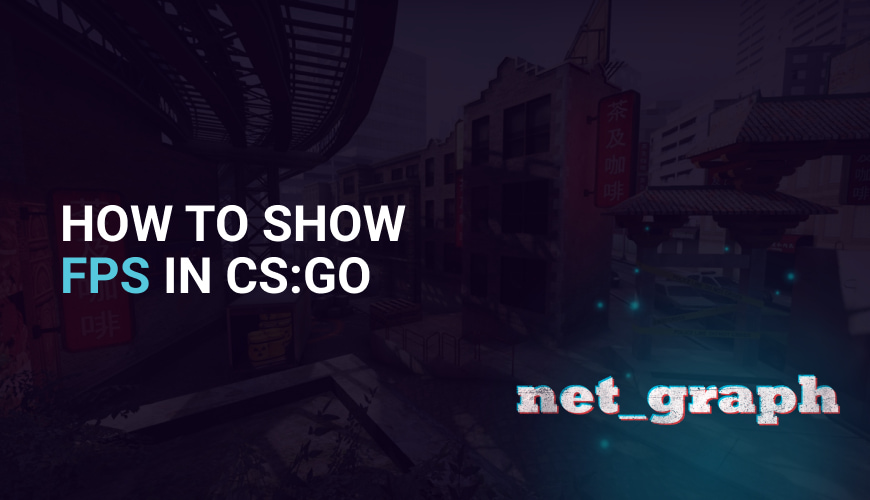
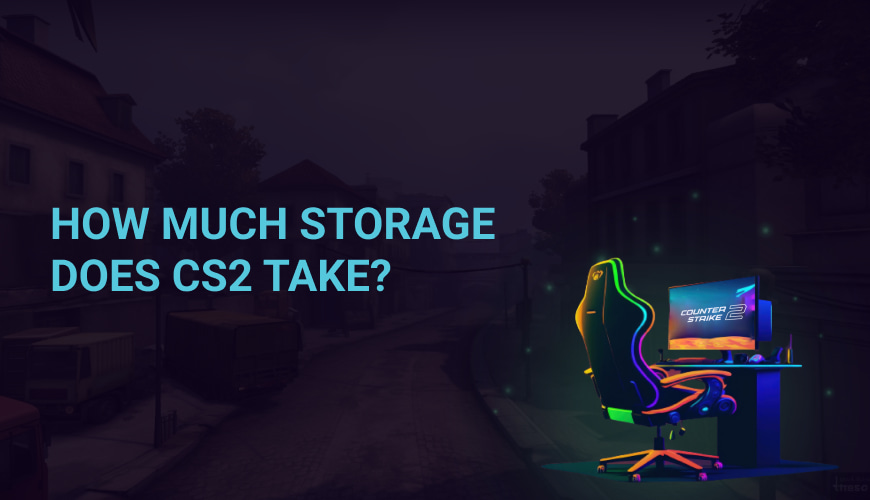
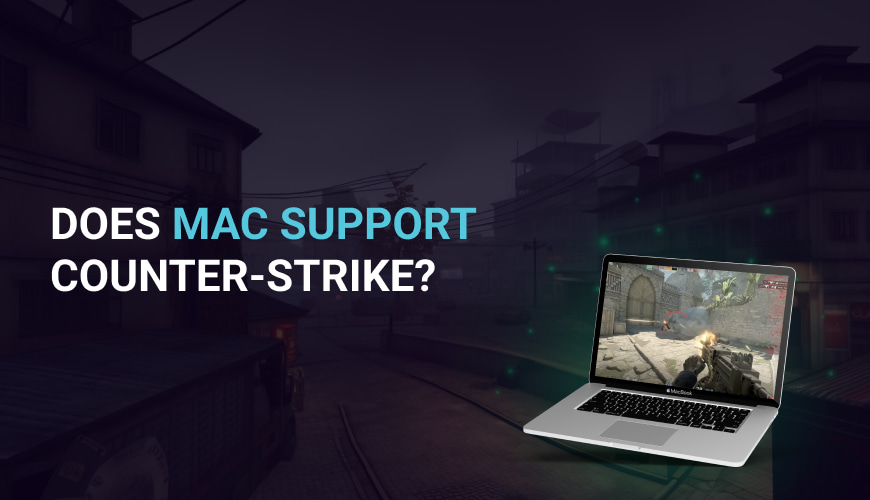

0 comments
Add a comment